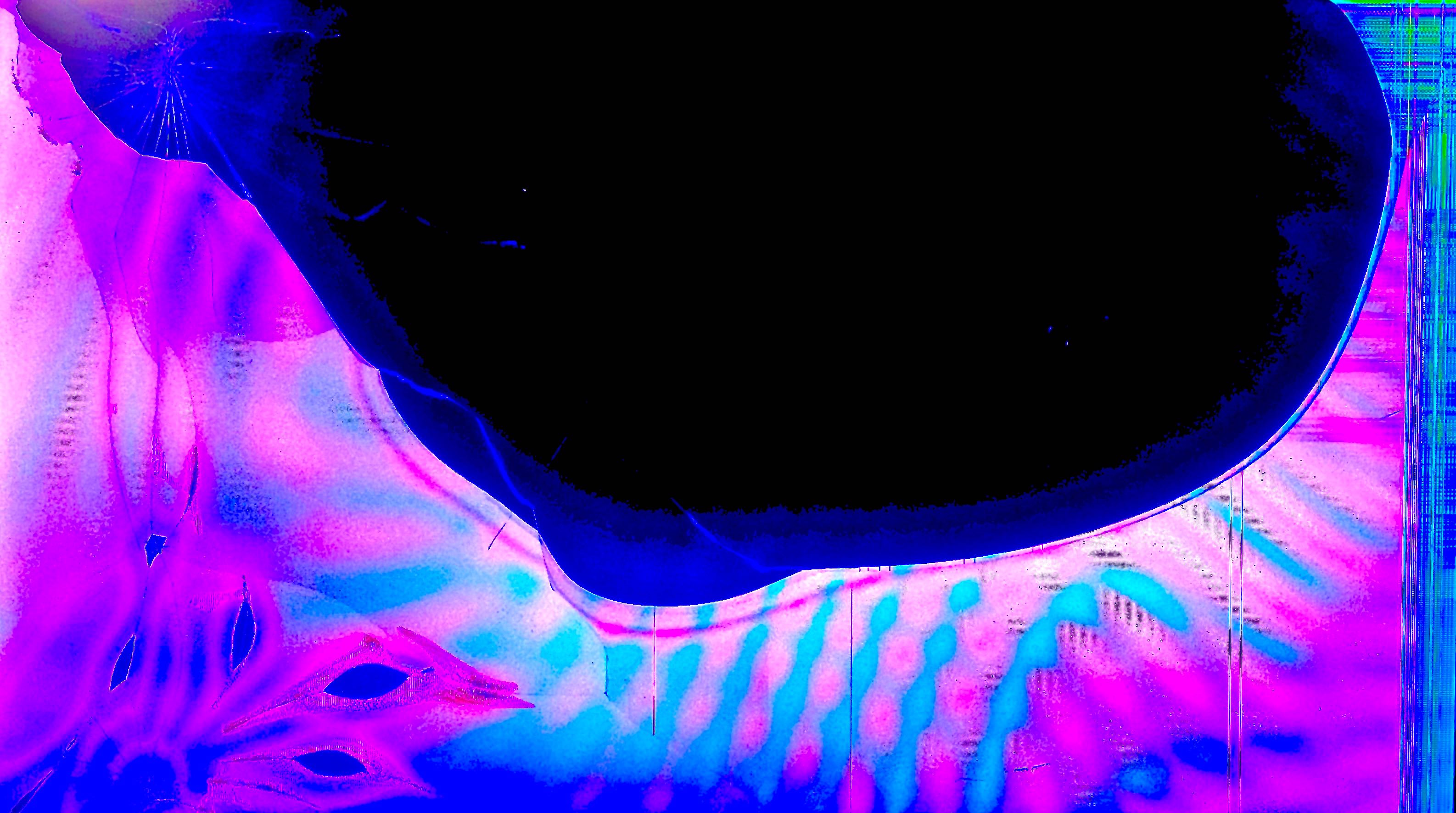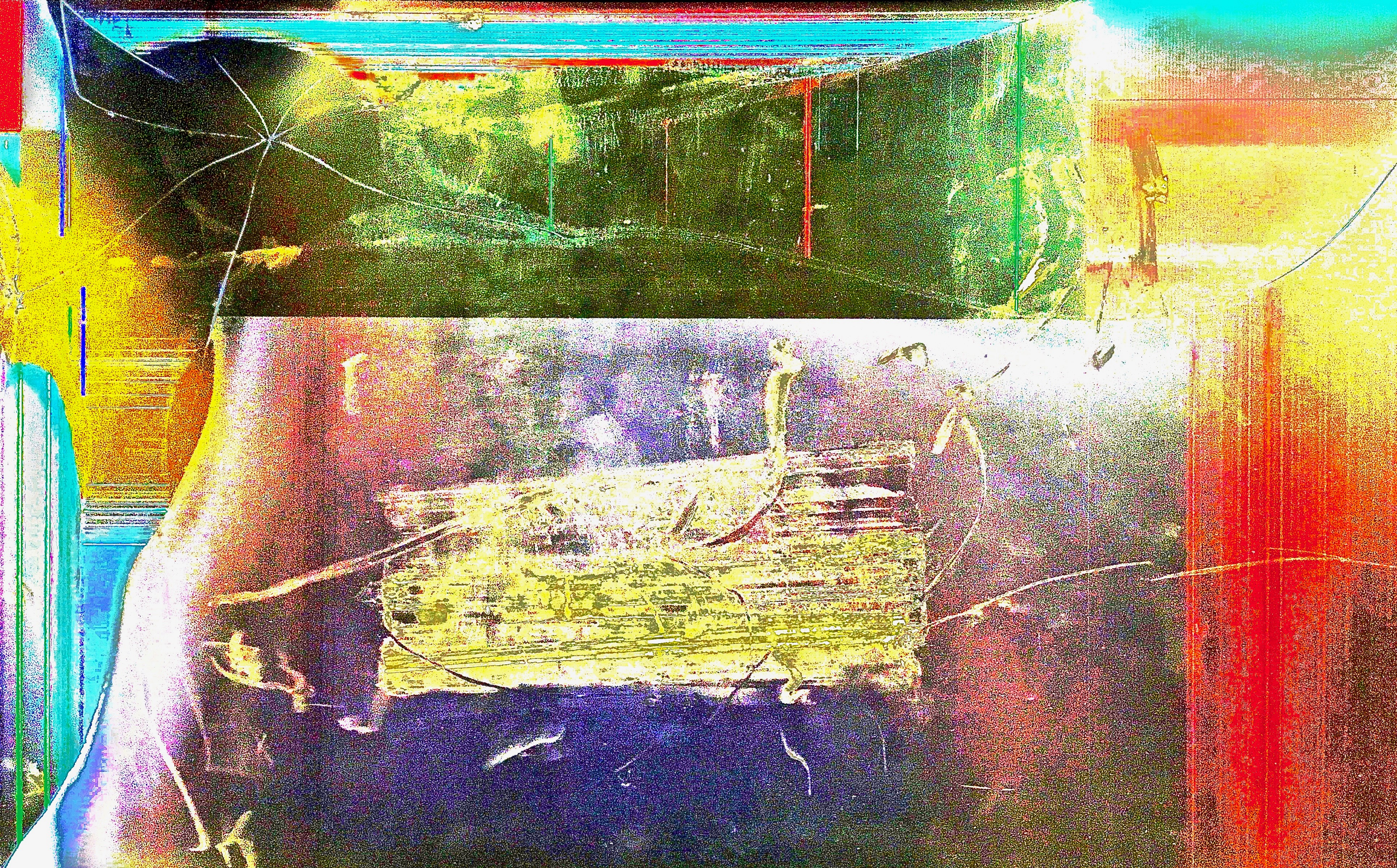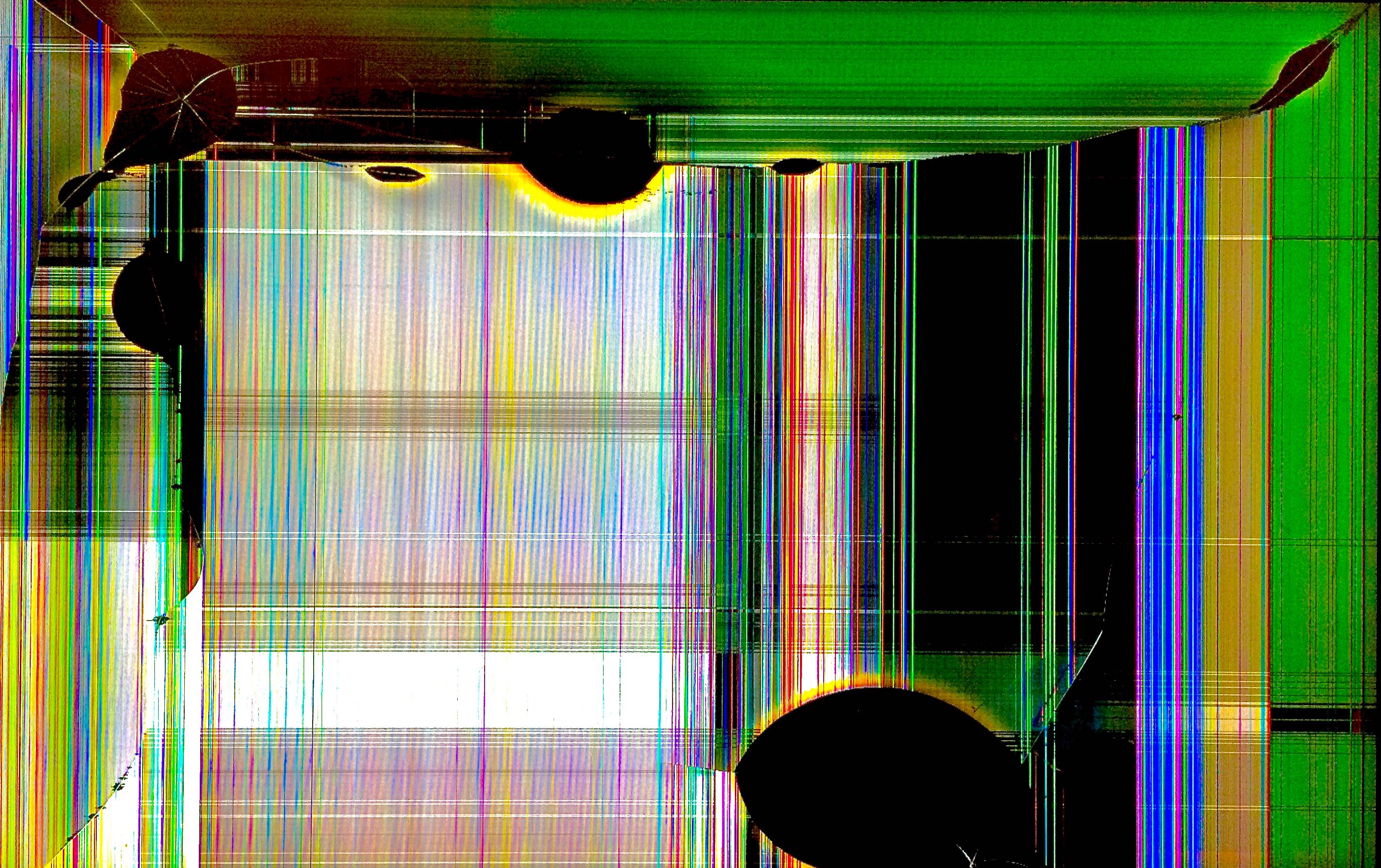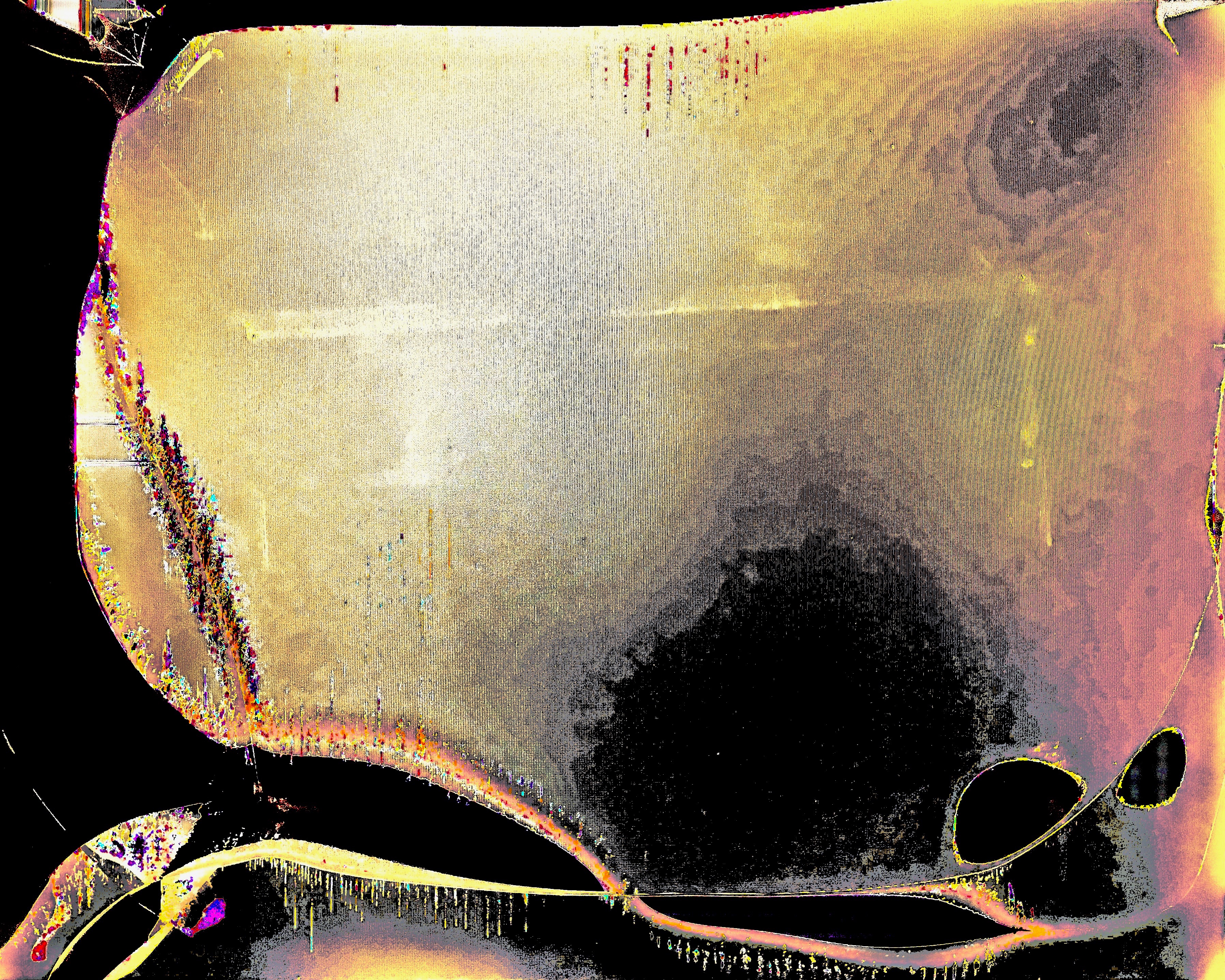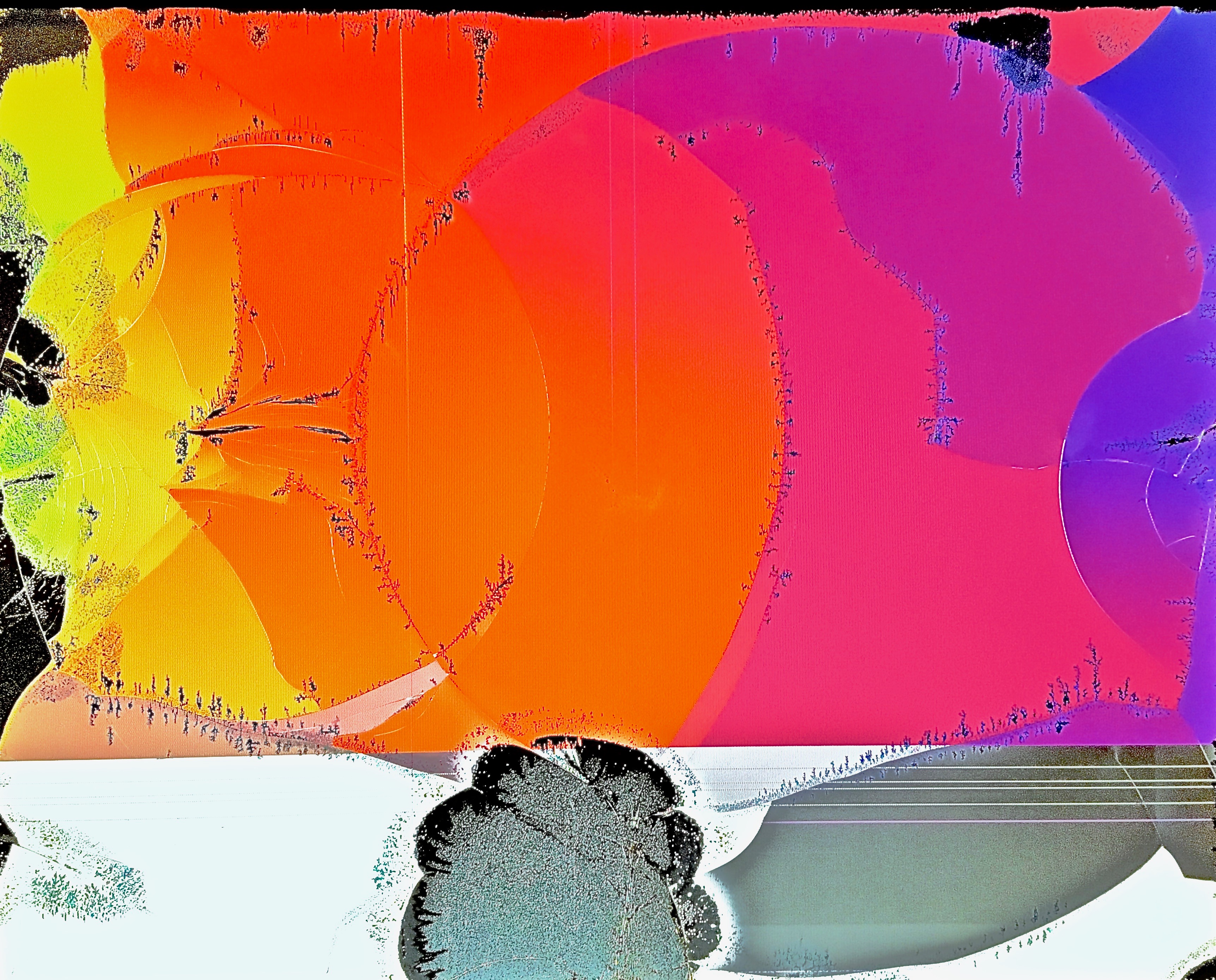Hello, and welcome to Monitors of Modern Art!
You can learn more about MOMA here,
browse our various collections, experience an
endless slideshow of our works, or look below for some
highlights of the gallery's best works.
(Warning: This site is not for mobile users browsing on data. Our images are large,
mostly uncompressed, and very data-intensive, so it is advised to view this website on a fast wi-fi
connection.)
This work uses the gallery's ripple wave archetype in a very interesting way, by restricting it to just two colors and blocking out the center of the image to give less of a sense of where the waves emanate from, or which direction they travel. The shading style and texture also help to make this work memorable and unique.
This looks less like a typical work of art in this gallery and more like a physical collage, with its spattering of different colors, textures, motifs, and contours. It emphasizes artistic exploration, pushing the boundaries and seeing what can be done.
This work is angular and blocky in an interesting way, and contains a diverse palette of different colors that don't quite mesh but yet do not disrupt each other. It's almost like a broken machine that, yet, still works through force of careful foresight and good construction. This work is also the predecessor of a few later works that explore the "room" theme further, most notably Mystery Room and Maze Room.
This is one of this gallery's premier examples of stellar coloring, texturing, shading, and overall composition. The rough digital texture in the background allows for a uniquely graded style of gradient that the color choices only enhance; this shading style is used to give both an impression of depth and to imply how things are falling apart; especially when it transitions into a dithering fade as deep blackness consumes the area around it. The work's foreground is no less intense and detailed, its sharp and visceral shapes serving as a symbol of determination and resistance - those things hanging on in the midst of the calamity. There is a lot of potential symbolism to be found in this work.
Gradient in Stages is a work that is unapologetically genuine in a way that almost no other work in this entire gallery can be, and which manages to be wholly unique in its compositional design. Very little of this work was manufactured after the fact - what you see is almost exactly what the monitor looked like before I took the photograph, and it remains, in my opinion, the most incredible monitor I have ever found.


